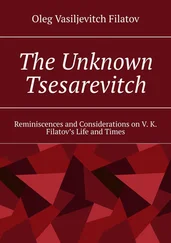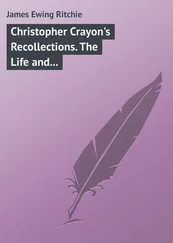David Eric Grohl was born on 14 January 1969 at Trumbull Memorial Hospital in Warren, just one mile from the street that now bears his name. He was James and Virginia Grohl’s second child, and a brother for their daughter Lisa, then still a month shy of her third birthday. Speaking with Nirvana biographer Michael Azerrad in 1993, Grohl described his parents as being positioned ‘pretty much at other ends of the spectrum’: in his eyes, his father was ‘a real conservative, neat, Washington DC kind of man’, his mother ‘a liberal, free-thinking, creative’ type, but in the early years of the couple’s relationship their shared passions evidently eclipsed such ideological divisions.
Virginia Jean Hanlon met James Harper Grohl while working in community theatre in Trumbull County. She was a striking, smart and sassy trainee teacher, he a quick-witted, charming and confident young journalist. Grohl was a classically trained flautist – nothing less than a ‘child prodigy’, according to his son – and a keen jazz buff; Hanlon sang with high school friends in an a cappella vocal group named the Three Belles. The pair also shared a love of poetry and literature, particularly the provocative counter-culture writings of Beat Generation authors Jack Kerouac, William Burroughs and Allen Ginsberg. In later years, in the company of his son’s more artistic, liberal-minded friends, James Grohl was fond of wheeling out an anecdote about Ginsberg (unsuccessfully) hitting on him when the pair moved in the same bohemian circles, a pointed reminder to his son that he wasn’t always such a strait-laced square.
At the time of his son’s birth, James Grohl was a journalist for the Scripps Howard news agency, a division of the multi-platform communications empire built up by the tough-talking Illinois-born media mogul Edward Willis Scripps. With a culture encouraging independent thinking, instincts for social reform and a healthy disrespect for authority, it was a fecund environment for any ambitious young journalist. For James Grohl, this avowed policy of fearless, scrupulous news-gathering was never more important than when he was called upon to cover the student protests at Kent State University in nearby Kent, Ohio in May 1970.
Founded in 1910 as a teacher training college, Kent State was officially accorded university status in 1935; then, as now, the college prided itself upon a commitment to ‘excellence in action’. By 1970 the student body, which included future Pretenders singer Chrissie Hynde, then an eighteen-year-old art student, numbered 21,000 across all programmes. That student body had become enraged when US President Richard Nixon, a man elected two years earlier on a pledge to end the war in Vietnam, announced on 30 April 1970 that US combat forces had invaded neighbouring Cambodia, an act widely interpreted as an escalation of the conflict.
When sporadic rioting broke out in the city in the wake of an anti-war demonstration on the university campus on 1 May, Mayor Leroy Satrom declared a state of emergency, and Ohio Governor James Allen Rhodes sent the National Guard to Kent to quell the disturbances and restore order.
On 4 May, when 2,000 protestors gathered on the university commons for another scheduled protest, they were ordered to disperse. When it became clear that the protestors were not prepared to comply with this injunction, the Guardsmen fired first tear gas, then live ammunition, into their midst. Four students were killed, and nine more injured.
Dubbed ‘the Kent State Massacre’ by the media, the killings galvanised the American anti-war movement. In the wake of the shootings, angry demonstrations were held on college campuses nationwide, and on 9 May an estimated 100,000 people converged upon Washington DC to protest against the Vietnam War and the horrifying events in Ohio. In response, the Nixon administration called upon the military to defend government offices, as the President was secreted from the District of Columbia to Camp David in Maryland for his own safety. White House staffers viewed the tense stand-off with mounting panic: upon seeing armed soldiers in the basement of the executive offices, one Nixon aide later commented, ‘You’re thinking “This can’t be the United States of America. This is not the greatest free democracy in the world. This is a nation at war with itself.”’
James Grohl’s dispatches from Ohio marked him out as a rising star within the Scripps Howard news service. In 1972, while working in Columbus, Ohio, he was asked to consider a move to Washington DC, the nation’s capital and political nerve centre, to develop his career further. For Grohl, the timing was perfect. This was the age of the crusading journalist, with Washington Post reporters Carl Bernstein and Bob Woodward being hailed as American heroes for their incisive and explosive investigations into a seemingly trivial burglary at the Watergate Hotel on 17 June 1972, which exposed a botched attempt to bug the offices of the Democratic National Committee offices and uncovered a paper trail all the way to the White House, leading to the resignation of ‘Tricky Dickie’ Nixon on 8 August 1974. What upwardly mobile young reporter wouldn’t wish to join the pair on the frontline in their tenacious pursuit of the truth? It was an opportunity Grohl accepted without reservation.
Like so many other transplants to the DC metropolitan area, he chose to relocate his family not in the District of Columbia itself, but in the outlying suburbs. Springfield, Virginia lay six miles down the I-95, just inside the Capital Beltway, and like the neighbouring towns of Arlington, Annandale and Alexandria it was a popular destination for commuters working in the city or at the nearby Pentagon offices. As with other Northern Virginian towns, it had a transient population, with the shifting dynamics of working on Capitol Hill leading many families to relocate after four or five years in the area. Despite this, residents worked hard to foster and maintain a strong community spirit.
At the dawn of the 1970s the Grohls’ new hometown was a location suited to the patronising sobriquet ‘white-bread’. But, befitting a town ‘15 minutes from chicken farmers, and 15 minutes from the White House’, as Dave Grohl would later describe it, Springfield, VA also had a more schizophrenic character. Here, urbane, moneyed politicos – those ‘fortunate sons’ eviscerated in song by Creedence Clearwater Revival – shared street space with blue-collar Southerners with gun racks on their pickup trucks and Skynyrd and Zeppelin blasting from their Camaros and Ford Mustangs.
The family lived on Kathleen Place, a quiet cul-de-sac, in a house Dave Grohl remembers as ‘a tiny shoebox’. The children settled quickly into their new home. Lisa Grohl enrolled at North Springfield Elementary School, while Dave, fondly remembered by his mother as ‘a pretty rambunctious kid’ with a taste for mischief that cherubic looks and a beatific smile couldn’t always mask, was left to explore his new surroundings on his go-kart, with his faithful companion, a somewhat bedraggled Winnie the Pooh bear, glued to his side.
‘Springfield was a great neighbourhood to grow up in,’ recalls Nick Christy, the frontman of Grohl’s first real band Nameless, whose own family moved to Springfield from Massachusetts in the early 1970s. ‘A kid could have a lot of fun there. The houses weren’t fancy or spectacular, but it was a nice friendly neighbourhood. It was all middle-income white families, and people looked out for one another. I only later found out that all my friends’ parents were in the FBI or CIA or were senators from Washington.’
Seduced by the electric, politically charged atmosphere of his new environs, James Grohl switched careers soon after settling in Springfield, quitting journalism to take up a new position as a speech writer/campaign manager for Robert Taft Jr, the Republican Senator for Ohio and grandson of former US President William Howard Taft. His wife also secured new employment, teaching English and drama at Thomas Jefferson High School in nearby Alexandria, where she was a popular addition to the staff.
Читать дальше












